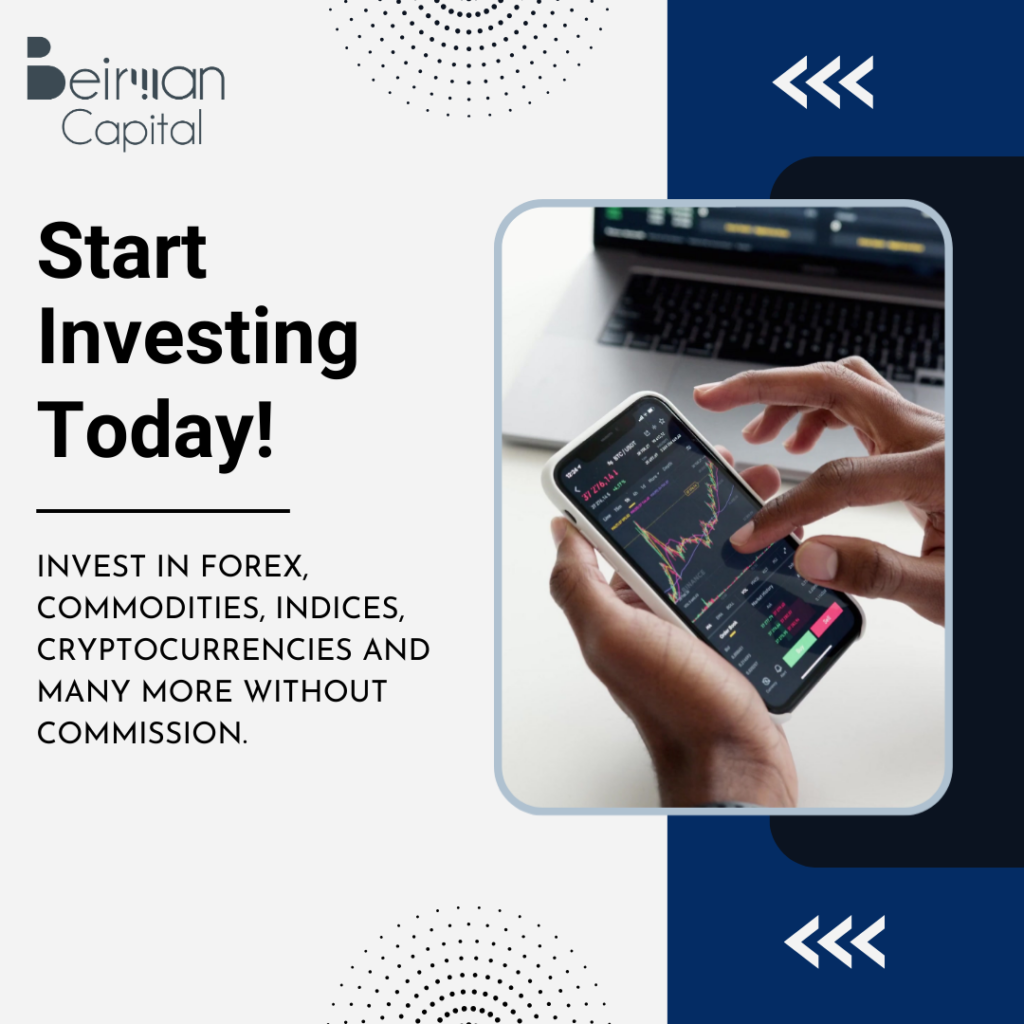4 Top Advanced Futures Trading Strategies
Futures is a contract to buy or sell assets at a predefined price at a specified date. Discover 4 top advanced futures trading strategies, breakout trading candle setups, & the proven pullback trading strategy with key features.
Table of Contents
Futures trading strategies is a thrilling way to start trading futures in financial instruments. The best part is that it is not limited to one market; you can trade global assets.
You can get high leverage and exceptional liquidity and diversify the capital into different assets in the futures market. You just need the right approach to profitability and adopt futures trading strategies.
In this Beirman Capital blog, we will learn the best futures trading strategies with their key features, but let us first briefly introduce futures trading and how to trade futures.
Along the way, you’ll explore essential concepts like what is pullback in trading, which helps traders spot temporary price reversals before the continuation of a trend. Equally important is understanding a breakout in trading, where prices push beyond support or resistance levels, offering strong trade signals.
A well-defined breakout strategy trading helps traders enter the market with clear entry and exit points based on breakout in trading scenarios. Similarly, mastering the pullback in trading concept is essential for timing the market accurately, and applying a structured pullback trading strategy can significantly improve trade outcomes.
What is Futures Trading?
Futures contracts are derivative contracts to enter or exit a trade in the financial assets. Under futures trading, traders buy or sell a trading instrument at a predefined rate on a specific date in the future.
Futures contracts are a great way to trade in a regulated environment. Traders can trade currency pairs, commodities, stocks, indices, ETFs, cryptocurrencies, and many other products through futures trading.

4 Top Futures Trading Strategies
Futures trading is a profitable yet complex way to trade futures contracts in the financial market. However, a trading strategy can help you in turning the complexity into simplicity.
Here are the top futures trading strategies to start futures trading, along with the pros and cons. It will help you select the right one accordingly:
Long Position Futures Trading:
Futures contracts are widely used by traders with strong bullish sentiments. These people tend to believe that the asset price will ultimately rise.
As a result, they used to take advantage of the rising market through futures contracts. Futures traders buy a contract expecting that the price of a particular asset will rise before the expiry. If their prediction becomes true, they earn a profit and lose money, which is the opposite case.
Let us look at the futures trading example of crude oil. Suppose the crude oil futures contract current price is around $70 per barrel. A trader believes that it has the potential to rise by $20 in the next two months.
In this example, the trader enters a futures contract at $70 with an expiry of two months and an exit price of $90. In this case, if the trader’s prediction becomes true and the price moves to $90 before the completion of two months, the trader will earn a profit of $20 per barrel.
Pros Simplicity and ease of trading futures. High-profit probability. Ideal for bullish traders.
Cons Market volatility. Unexpected change in futures market conditions.
Short Position Futures Trading:
Futures trading allows traders to take advantage of both bullish and bearish markets. Many traders in the market love to trade against the market.
Such traders identify the conditions when the asset price tends to fall and take advantage of temporary price drops. Generally, short-term traders opt for the strategy.
In the hope of a price drop, traders enter a sell position, and if their prediction goes true, they earn profit from the falling market.
Suppose a trader thinks that the price of a EUR/USD pair will fall next month. The current futures rate for the pair is 1.05 USD. The traders open a buy position at the prevailing futures price and set an exit price of 1.03 USD. If the price of the pair drops to 1.03 till the expiry of the contract, the trader will make a profit and lose money in the opposite scenario.
Pros Low-Profit Probability Ideal for Bearish traders Require in-depth futures market trading understanding
Cons High Risk Complexity
Breakout Trading
Breakout trading is another popular futures trading strategy for trading in the futures market. The trading styles consider technical analysis tools and indicators to identify potential price movements.
Under this, futures traders keep a watch on trading charts to identify the key support and resistance levels in the asset’s price. Breakout traders open a trade when a price breaks a key trade level, often analyzing breakout trading candle patterns to confirm market direction.
If the price of an asset breaks the support level, it suggests that it will fall further, and the trader will open a short position in this case. Meanwhile, if the price of an asset breaks above the resistance level, it suggests that it will rise further, and the trader will open a long position in this case. This scenario is commonly referred to as a breakout in trading.
Example
Let us look at an example of futures gold trading. The gold was trending within the level of $2050 and $2150. A trader decided to enter a futures trade if the price breaks $2150, setting the stop loss of $2130 and take a profit of $2190.
In this case, if the price breaks the level of $2150, the trader will wait for confirmation to enter a futures contract at $2160. So if the trader’s prediction went true and the price moved to $2190, the trader would make a profit and lose money in the opposite case. Sometimes traders rely on breakout price analysis to validate the entry decision.
Such strategies can also be used in breakout competition scenarios where traders test their skills in identifying real-time breakouts. Traders must be cautious of false breakout situations, where the price temporarily moves beyond a level before returning.
Patterns like pattern breakout are commonly studied to improve accuracy. Some traders employ break trade tactics to manage risk when a breakout attempt fails. This is why understanding what is a breakout in trading is critical for success.
Pros
- Diverse futures market trading applicability.
- Identify exact entry and exit points.
- High profit potential.
Cons
- Required technical analysis knowledge.
- False breakouts may occur.
- Subjective to individual interpretation.
Some traders also combine breakout strategy trading with break out funding plans, allowing them to optimize capital allocation during trades.
The Pullback Strategy
The pullback strategy is another technical analysis based approach for trading futures. Under this, futures traders identify price pullbacks to identify potential trade opportunities.
A pullback occurs when the price breaks the key support or resistance level but reverses and again continues the trend. The temporary reversal generally occurs due to the pressure of the opposite-trend trader. However, the price manages to continue the ongoing trend, which makes understanding the pull back meaning essential for traders.
A bullish pullback occurs when the price breaks a resistance level during an uptrend and then starts rising after touching the resistance level. In such cases, futures traders tend to take a long position.
Meanwhile, a bearish pullback occurs when the price breaks a support level during a downtrend and then starts falling after touching the support level. In such cases, futures traders tend to take a short position.
This approach is widely applied in different setups including the micro pullback strategy for tighter stop losses and smaller timeframes, or the broader pullback trading strategy for swing trades and day trades. Understanding what is pullback in trading and differentiating it from a market pullback or a pullback vs correction scenario can significantly improve trade accuracy.
Many traders refine their approach by mastering trading pullbacks strategy and pullback trading techniques to capture continuation trends.
Pros
- Low Risk.
- Identify multiple trading futures strategies opportunities in multiple assets.
Cons
- False signals in a choppy market.
- Technical analysis knowledge is required.
Whether you’re exploring what is a pullback in trading or aiming to implement an advanced pullback trading strategy, mastering this technique can open the door to consistent trade setups across various market conditions.
Conclusion
We have discussed the best futures trading strategies for beginners with pros and cons. You can select any of the futures trading strategies; however, first, get in-depth futures market trading knowledge.
Every futures trading strategy has some positive and negative side, but knowledgeable futures traders know how to manage the limitations. The futures market can be a great place to earn profitability however it also has some limitations.
The futures contracts are rigid, complex, and have expiry limitations.
So if you are looking for alternatives for future trading strategies, you can give CFD trading a try. Like futures, you can trade all the assets using CFD trading. It gives more flexibility and freedom. Open an account with Beirman Capital and give CFD trading a try.
FAQs
1. What is the typical success rate in futures trading?
The success rate with future trading strategies is somewhere around 7 to 10%.
2. What are the most profitable futures trading strategies?
Long Position Future Trading
Short Position Future Trading
Breakout Trading
Pullback Trading
3. How to trade futures for beginners?
Learn about future market
Prepare a future trading plan
Organize Market Analysis
Identify buy or sell opportunities
Enter, Adjust and Exit future trade
4. How risky is futures trading?
Future trading involves the risk of losing money. However you are trading in a regulated environment so risk is comparatively less to CFD or spread betting.
Get Complete Forex Trading Assistance



